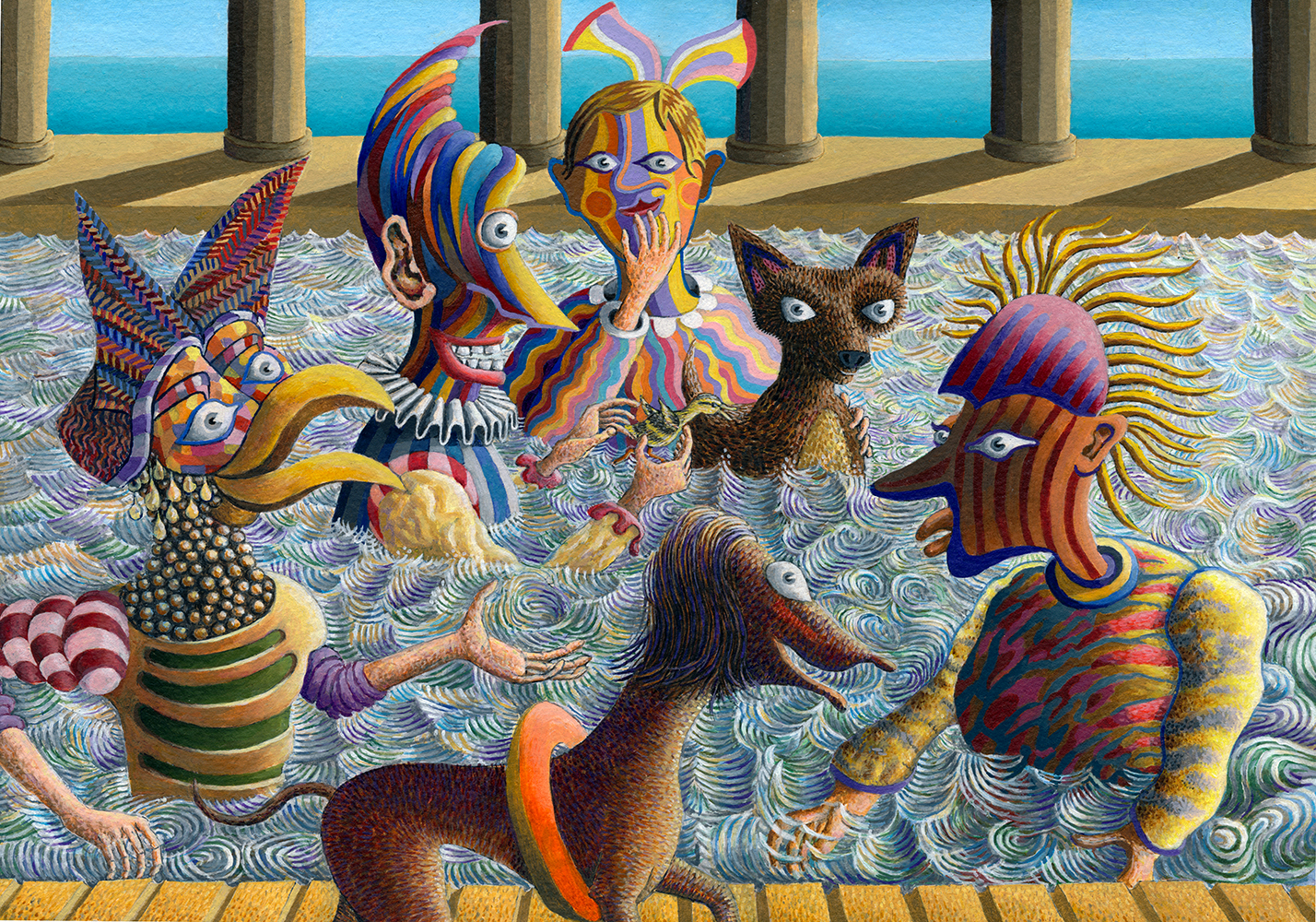

Typically English weather from the artist’s youth. White clouds scud across a china blue sky and the distant countryside is seen through the dappled shade of native lime trees. We see the artist’s happiness in his growing family: his wife walks contentedly along a quiet country road; his son waits to cross under the watchful gaze of his sister. The artist walks up the steps from the cafe to join his family for a gentle ramble.
![]()

Low level nuclear waste is often stored under water and in the girl’s dream twisted forms, suggesting industrial machinery, reach down into the cold blue waters.
Higher up a mother leads her little girl peacefully across a bridge, but on looking closer we see the path stops abruptly and they both will plunge into the icy waters below.
![]()
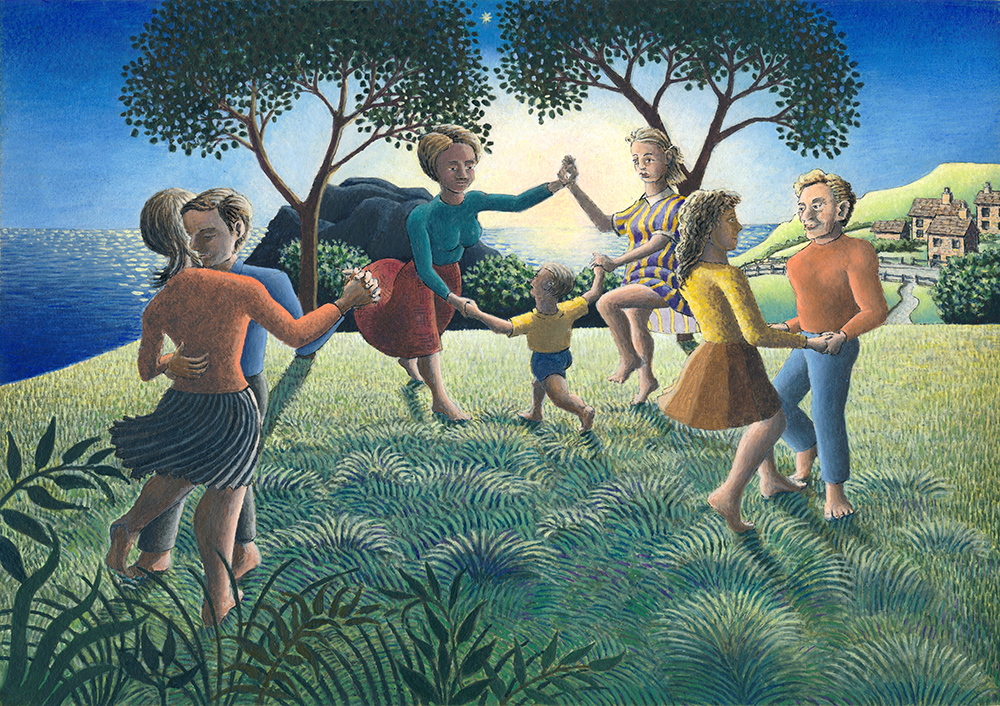
The idea for this picture came from Paula Rego’s ‘The Dance’ (1988 Tate Gallery). I liked the rhythmical quality of her figures and have kept pretty much to her arrangement. However, her picture is in moonlight, whereas I have chosen early evening, just as the first stars are beginning to appear.
![]()
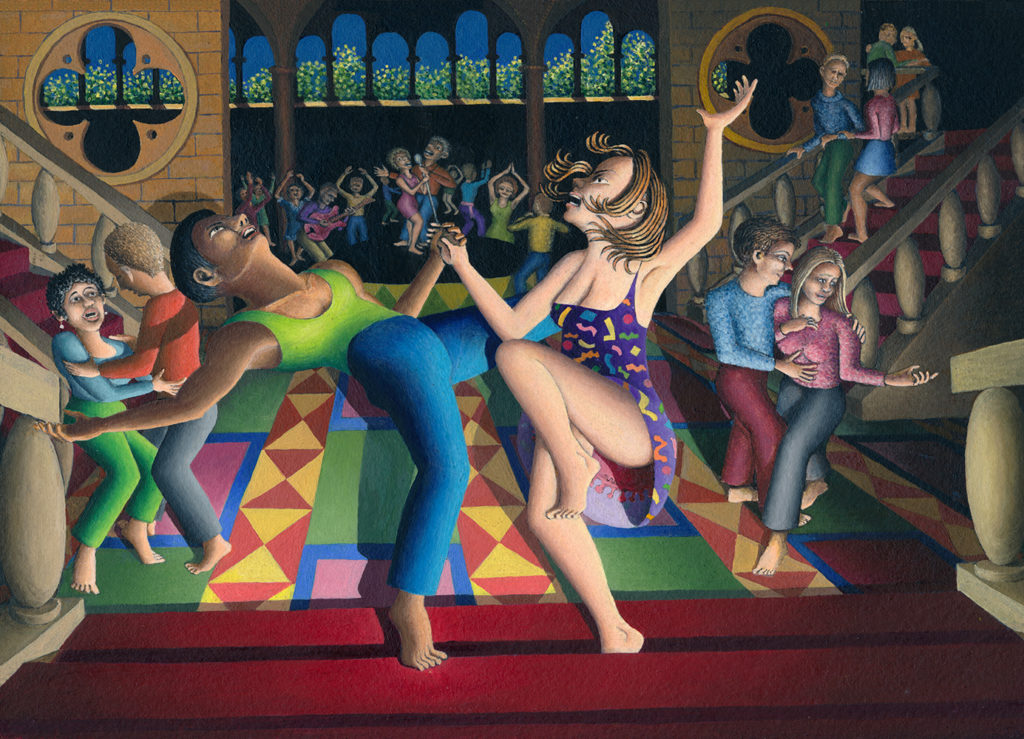
A happy scene – boy meets girl and dances the night away. However, the composition was not quite as trouble-free. The original viewpoint was looking up the stairs, making it extremely difficult to add all the secondary figures. Also the boy’s leg was kicking straight up into the air and looked ridiculous against his partner. Music is from the 60s and the singer is Smokey Robinson.
![]()
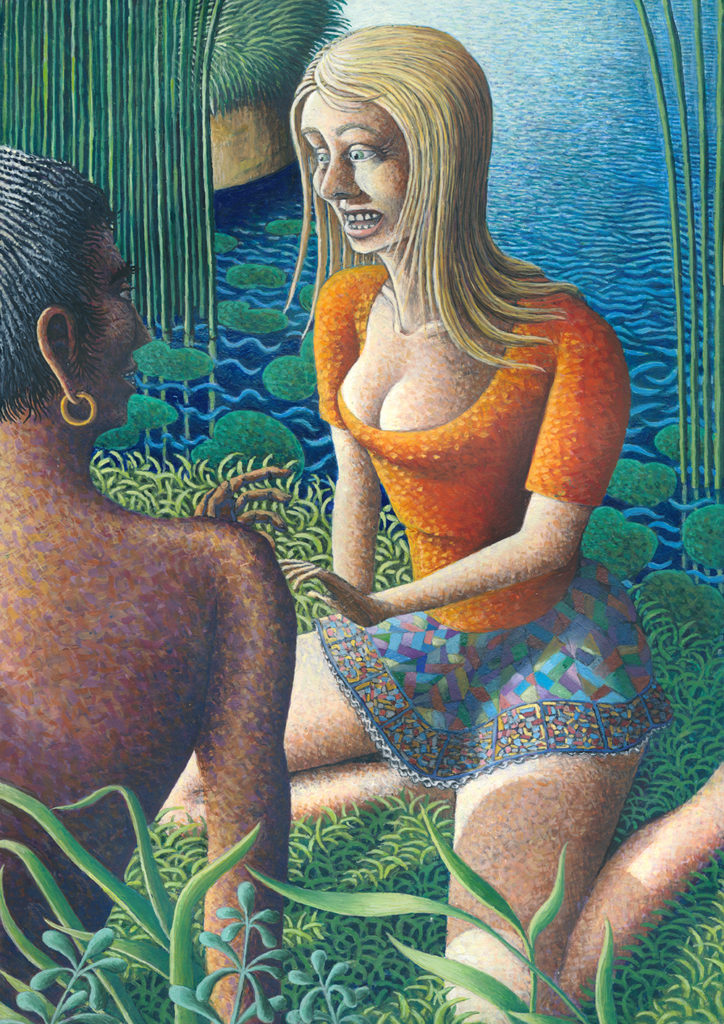
This picture was inspired by the song ‘the Raggle Taggle Gipsies’, sung by Christy Moore (Prosperous, Tara Records). The blond-haired girl is the lady who sings:
“What care I for my goose feather bed
Wi’ blankets strewn so comely-o?
Tonight I lie in a wide open field
In the arms of a raggle taggle gypsy-o.”
![]()

The tree in this picture is taken directly from the drawing ‘Little Dorrito’, but the trunk and branches are quite different here. The bark is painted in coloured stripes, which start as yellow and then merge into orange and red.
The curved and twisted branches together with the impressionistic leaves show the blowing of a gentle breeze.


This painting is based on a drawing I completed in 1982, showing a girl against a threatening sky. However, in this composition I have changed her hair into corkscrew curls. Is this a new fashion or is she Medusa, perhaps, with her hair turning into snakes? What about the couple under the archway? Are they embracing or fighting?
![]()

Ivan captures the firebird and uses one of its magic feathers to woo the beautiful Tsarevna. He must perform three tasks to win her hand: first he plays the guitar so beautifully that all the birds of the forest listen; secondly, he keeps the two dogs beside him without a chain while deer and hares pass by; and thirdly he tells a tale that each understands in his own language.


We like to think that war happens far away from our safe and secure homes. Tumult here is represented by the burning city (top left). Tanks roll in (giant snails) to blast the city to smithereens. Meanwhile, a girl gently rows through tranquil water lilies and wild geese. She doesn’t see a large open mouth ready to swallow her. This is an allegory of humanity as worlds within worlds.
![]()
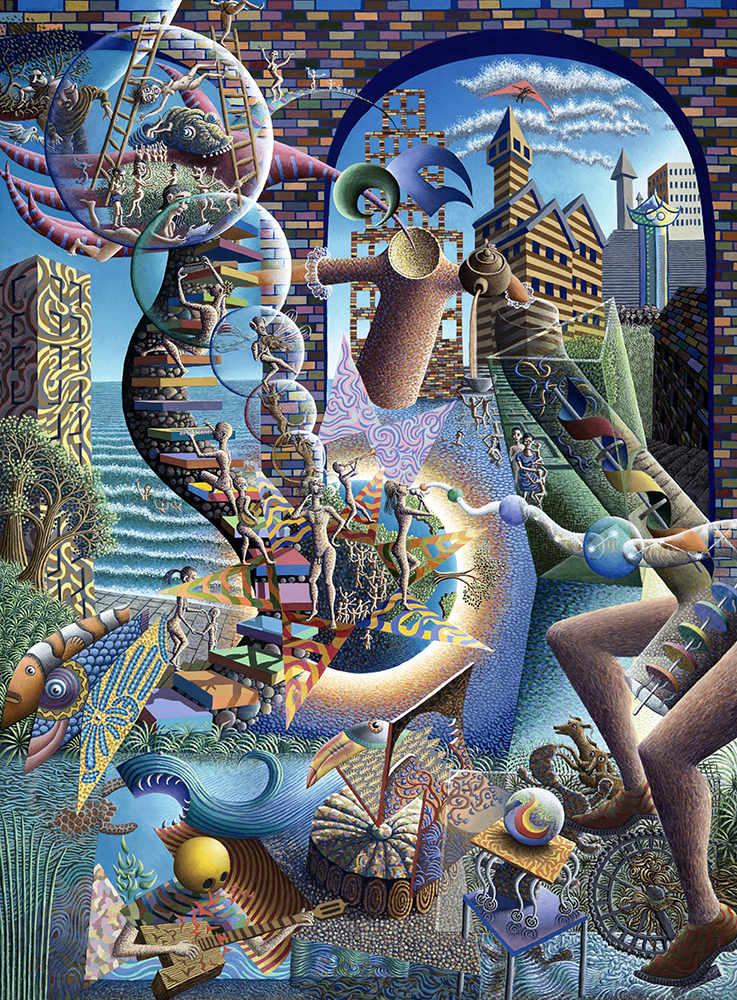
Look close up and move your eyes from one detail to the next. It should follow like a spoken story. However, there is no right or wrong path, as each is valid. The whole design can then be thought of as an abstract experience, created with figurative building blocks. But unlike an abstract work, its individual elements can then be strange and bizarre, like the logic of a dream.
![]()
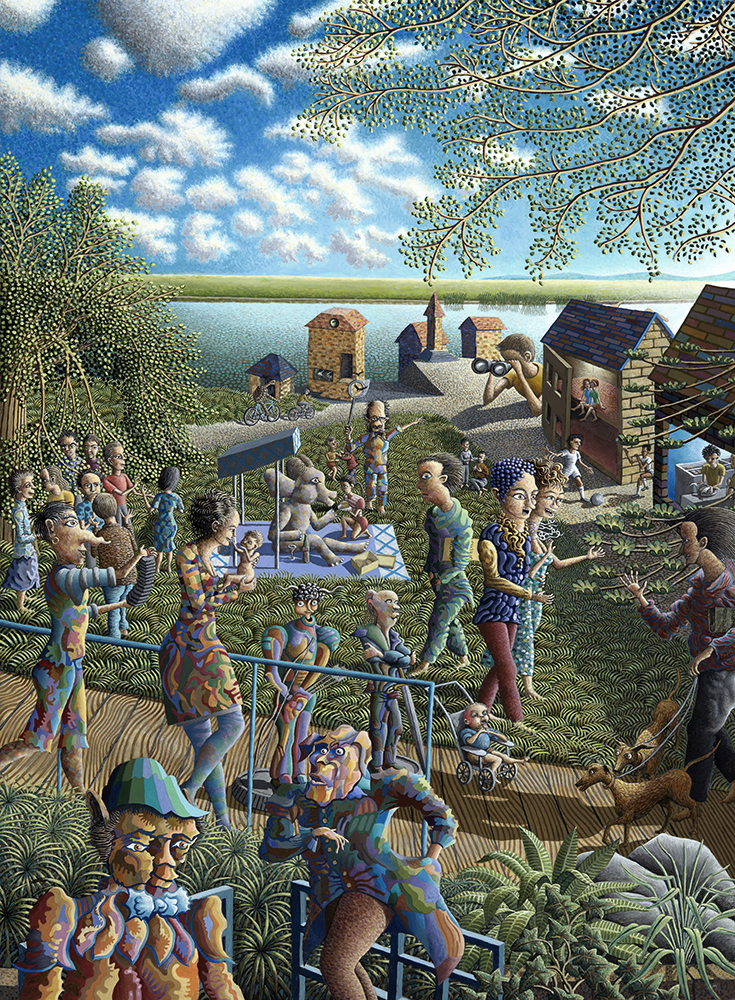
There are dozens of different ways in which heads have been depicted here. This is because the original abstract design, which was the start of the picture, contained many of the marks and squiggles which now make them up. This is particularly so in the many characters in the foreground. A boy observes the scene through his binoculars. This is a world of his imagination and all the people are his toys come to life.
![]()

This work started with completely abstract shapes which then morphed into birds, fish, water and trees. All the actors – sea cucumbers, catfish or strutting birds – are made from these original blotches. This anarchy then helps to create much more expressive characters with lively bodies and exaggerated limbs. Water is depicted in five different ways, each with its own life form.
![]()

Tootle Bunting emerged from another painting full of strange musicians. It has hints of ‘Pan’ from Kenneth Graham’s ‘Piper at the Gates of Dawn’ (Wind in the Willows) and is placed above a sluggish stream full of reeds and water lilies. He should really have the legs of a goat and be playing pan-pipes rather than the flute.

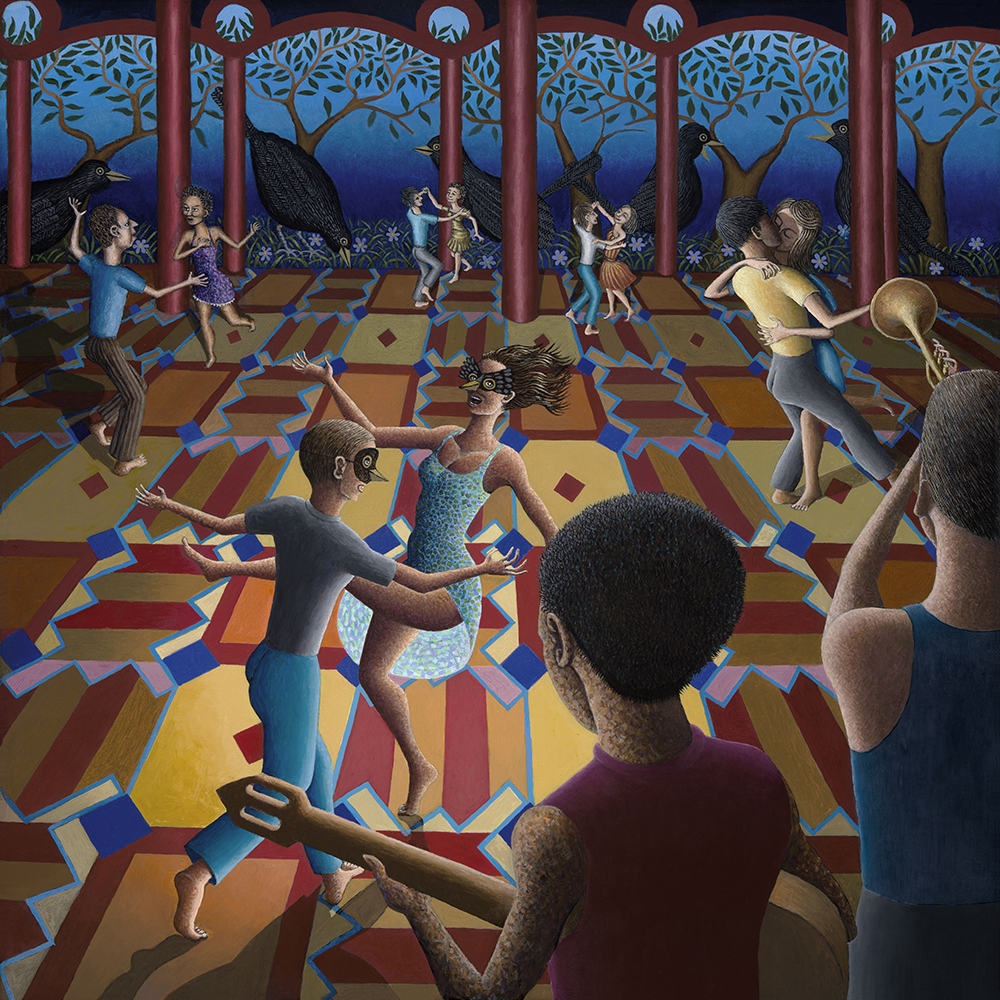
The Beatles’ song: “Blackbird singing in the dead of night, take these broken wings and learn to fly. All your life you were only waiting for this moment to arise.” inspired this picture. The blackbird’s song is one of the most beautiful of any British bird and is often heard after rain. The brightly coloured floor shows the rhythm of the music.
![]()

The central zigzag shape holds the reflected image of a drawing from my early blue notebook. I have added a curved surrounding from another abstract image. Candles illuminate a group of strangely shaped figures emerging from the shadows. Lower down, beside a piano, a man with burning hair and a bald man with outstretched arm show their emotions at the disturbing scene.
![]()
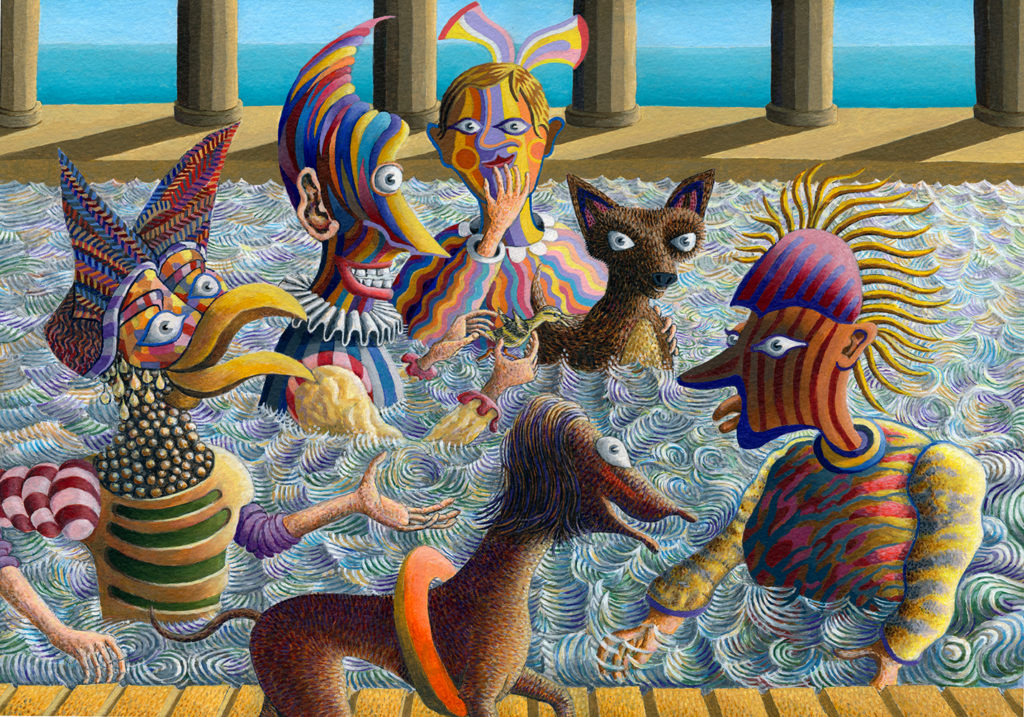
The idea for this painting came from another larger work still in progress. A Pierrot character has taken a duckling into the swimming pool, apparently to teach him how to swim. But, of course, ducks can swim without any help, so this is only one of the many incongruences in the picture.
![]()
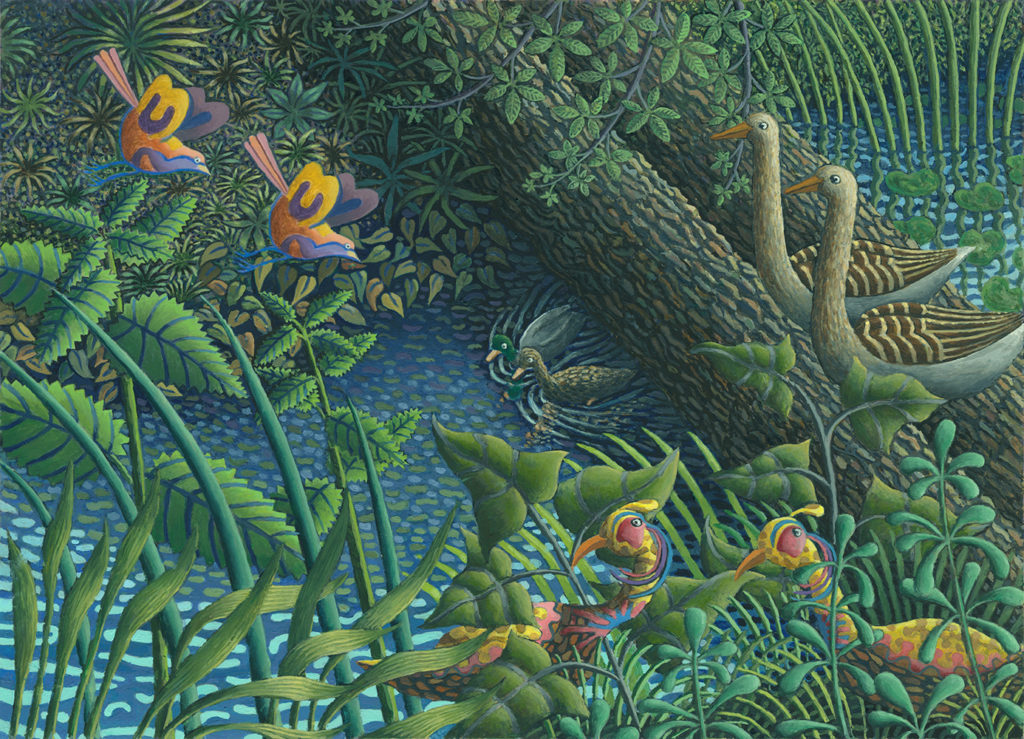
Pairs of birds come together to celebrate their own individuality. But, as the saying goes, “birds of a feather flock together” and each has more in common with his own kind than with others.
Yet when all is seen together, the birds blend into a wonderful tapestry of leaves and foliage, which makes up their wonderful watery world.
![]()

This composition is abstract but contains some shapes looking like musical notes and a child’s castle. It comes from my blue notebook.
Strangely enough the whole composition lies behind “Jacob’s Ladder” and if you look carefully you can still see some of the shapes which carried over e.g. the yellow/brown tube on the right.
